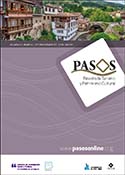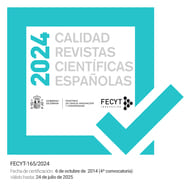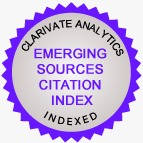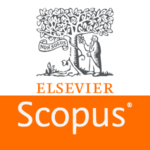The importance of branding in tourism: the case of the regional entity of Tourism in Porto and Northern of Portugal
DOI:
https://doi.org/10.25145/j.pasos.2021.19.049Keywords:
Tourism , Brand , Brand personality , Destination Branding , Porto ande Northen Portugal , Regional entityAbstract
In the last few decades, branding is an important part of marketing tourism destinations. Tourist destinations started to be seen as companies and started to use the brand as a way to attract and retain visitors. The brand is based on a perspective of value creation acting as a differentiation strategy in an increasingly competitive market.
In this context, this study presented here sought to understand how the regional entity of Tourism in Porto and Northern Portugal has developed its marketing through branding. In methodological terms, in a first part, there is an analysis of the literature on the concept of brands, and in a second part, the strategies adopted by the target entity of our study were analysed. As main conclusions, it was found that this entity sought to create its own brand, aggregating all anchor strategic products and complementary products, from its sub-regions with a view to promoting its natural and heritage resources, and to convey the idea of a glamorousa cosmopolitan destination with history and tradition.
Downloads
Publication Facts
Reviewer profiles N/A
Author statements
- Academic society
- PASOS. Revista de Turismo y Patrimonio Cultural
- Publisher
- Instituto Universitario de Investigación Social y Turismo. Universidad de La Laguna (España) - Instituto Universitario da Maia ISMAI (Portugal)
References
Aaker, D. (2014). Aaker on branding: 20 principles that drive success. New York: Morgan James Publishing.
Aaker, D., e Joachimsthaler, E. (2000). The brand relationship spectrum: The key to the brand architecture challenge. California management review, 42(4), 8-23. Disponível em http://faculty.mu.edu.sa/public/uploads/1358444333.324brand83.pdf
Aaker, J. (1997). Dimensions of brand personality. Journal of Marketing Research, 34(3), 347-356. Disponível em http://www.haas.berkeley.edu/groups/finance/Papers/Dimensions%20of%20BP%20JMR%201997.pdf
American Marketing Association (AMA). (2008). The American Marketing Association Releases New Definition for Marketing. Disponível em https://archive.ama.org/archive/AboutAMA/Documents/American%20Marketing%20Association%20Releases%20New%20Definition%20for%20Marketing.pdf
Azoulay, A., e Kapferer, J. (2003). Do brand personality scales really measure brand personality? Journal of Brand Management, 11(2), 143–155. Disponível em https://doi.org/10.1057/palgrave.bm.2540162
Boo, S., Busser, J., e Baloglu, S. (2009). A model of customer-based brand equity and its application to multiple destinations. Tourism Management, 30(2), 219-231. Disponível em https://doi.org/10.1016/j.tourman.2008.06.003
Carvalho, P. (2015). Modelo concetual integrativo de Destination Branding – Tourist Mind. Teste empírico no Porto e Norte de Portugal (Tese de Doutoramento) Universidade Fernando Pessoa, Porto. Disponível em http://hdl.handle.net/10284/4895
Cunha, L. (2013). Economia e política do turismo (3.ª edição). Lisboa: Lidel - Edicões Técnicas.
Davies, G., e Chun, R. (2003). The use of metaphor in the exploration of the brand concept. Journal of Marketing Management, 19(1-2), 45-71. Disponível em https://www.researchgate.net/publication/233609561_The_Use_of_Metaphor_in_the_Exploration_of_the_Brand_Concept
De Chernatony, L., e Riley, F. (1998). Defining a "brand": beyond the literature with experts' interpretations. Journal of Marketing Management, 14(5), 417-443. Disponível em https://www.researchgate.net/publication/247494772_Defining_A_Brand_Beyond_The_Literature_With_Experts%27_Interpretations
Fischer, M., Völckner, F., e Sattler, H. (2010). How important are brands? A cross-category, cross-country study. Journal of Marketing Research, 47(5), 823-839. Disponível em https://www.researchgate.net/publication/259839231_How_Important_Are_Brands_A_Cross-Category_Cross-Country_Study
Gnoth, J. (1998). Branding tourism destinations. Annals of tourism research, 25, 758-759. Disponível em https://www.researchgate.net/publication/248500431_Branding_Tourism_Destinations
Gnoth, J. (2002). Leveraging export brands through a tourism destination brand. The Journal of Brand Management, 9(4), 262-280. Disponível em https://www.researchgate.net/publication/233632603_Leveraging_export_brands_through_a_tourism_destination_brand
Hall, D. (2002). Brand development, tourism and national identity: The re-imaging of former Yugoslavia. Journal of Brand Management, 9(4), 323-334. Disponível em https://doi.org/10.1057/palgrave.bm.2540081
Kavaratzis, M., e Ashworth, G. (2005). City Branding: An Effective Assertion of Identity or a Transitory Marketing Trick?. Tijdschrift voor Economische en Sociale Geografie 96(5), 506-514. Disponível em https://www.researchgate.net/publication/4997029_City_branding_An_effective_assertion_of_identity_or_a_transitory_marketing_trick
Keller, K. (2003). Brand Synthesis: The Multidimensionality of Brand Knowledge. Journal of Consumer Research, 29(4), 595-600. Disponível em https://doi.org/10.1086/346254
Keller, K. (2013). Strategic brand management: Building, measuring, and managing brand equity (4.ª ed.) [PDF]. Disponível em http://www.kvimis.co.in/sites/kvimis.co.in/files/ebook_attachments/Keller%20Strategic%20Brand%20Management.pdf
Kotler, P. (1999), Administração de marketing: análise, planejamento, implementação e controle. São Paulo: Atlas.
Lei n.º 33/2013 de 16 de maio. Disponível em https://dre.pt/application/file/a/261001
Martins, H. (2017). O turismo no Parque Nacional da Peneda-Gerês: a experiência da marca do destino, o apego ao lugar, a satisfação, os comportamentos pró-ambientais e as intenções comportamentais. (Tese de doutoramento) Universidade de Coimbra, Coimbra.
Martins, H. (2018). A Personalidade da marca do destino e a imagem de marca do destino: um estudo sobre os turistas do PNPG. European Journal of Applied Business and Management, 3(2), 85-108. Disponível em http://nidisag.isag.pt/index.php/IJAM/article/view/277/pdf_24
Morgan, N., Pritchard, A., e Pride, A. (2004). Destination Branding: Creating the Unique Destination Proposition. Oxford: Butterworth-Heinemann.
Morrison, A., e Anderson, D. (2002, junho). Destination branding. Comunicação apresentada no Missouri Association of Convention and Visitor Bureaus Annual Meeting. 10 de junho. Missouri, EUA. Disponível em http://www.macvb.org/intranet/presentation/DestinationBrandingLOzarks6-10-02.ppt
Pereira, C. (2013). Branding de cidades: o caso de Santiago de Compostela (Tese de doutoramento), Universidade de Lisboa, Lisboa. Disponível em http://hdl.handle.net/10400.5/6458
Pike, S. (2004). Destination Marketing Organisations. Oxford: Elsevier.
Pike, S. (2005). Tourism destination branding complexity. Journal of Product & Brand Management, 14(4), 258-259. Disponível em https://www.researchgate.net/publication/43515204_Tourism_Destination_Branding_Complexity
Pordata. (2013). Base de dados Portugal contemporâneo. Disponível em http://www.pordata.pt/O+que+sao+NUTS
Ramos, P., Salazar, A., e Gomes, J. (2000). Trends in Portuguese tourism: a content analysis of association and trade representative perspectives. International Journal of Contemporary Hospitality Management, 12(7), 409–417. Disponível em https://www.researchgate.net/publication/235306136_Trends_in_Portuguese_tourism_A_content_analysis_of_association_and_trade_representative_perspectives
Resolução do Conselho de Ministros n.º 53/2007 de 4 de abril. Disponível em https://dre.pt/application/file/a/520164
Smilansky, S. (2009). Experiential marketing: A practical guide to interactive brand experiences. London: Kogan Page Publishers.
Turismo de Portugal. (2017). Estratégia Turismo 2027 – Liderar o turismo do futuro. Disponível em http://fortis.pt/files/2017/03/estrat%C3%A9gia-turismo-2027.pdf
Turismo do Porto e Norte de Portugal (2015). Estratégia de Marketing Turístico do Porto e Norte de Portugal – Horizonte 2015-2020. Disponível em 2020, maio, 13, de http://www.portoenorte.pt/fotos/gca/plano_estrategico_10327505915894b4d3a978b.pdf
Turismo do Porto e Norte de Portugal (2016). Plano de ação e orçamento PNP 2017. Disponível em 2017, janeiro, 23, de http://www.portoenorte.pt/client/files/0000000001/3191.pdf
Downloads
Published
How to Cite
Issue
Section
License
Copyright (c) 2020 Hugo Manuel Oliveira Martins

This work is licensed under a Creative Commons Attribution-NonCommercial-NoDerivatives 4.0 International License.
I confirm that the work is original (of my/our authorship), and that it will not be submitted to other journals or publications until the final resolution of the review process in PASOS, RTPC.
I authorize the publication of my work by PASOS, PSTN of free and open access in any of the formats that I deem appropriate, for an indefinite period of time and as a non-remunerated collaboration.
Likewise, the author(s) understands that the published work may be linked or deposited on any server or included in other publications (republication), provided that the new place and/or new edition references the original publication and acknowledges the authorship and copyright ownership of PASOS RTPC publications.
Authors understand that a plagiarism-self-plagiarism check will be performed, and the article may be removed at any time from the editorial flow.










